Explore What Clothes the Prophet Muhammad Wore

Description of the Clothes of the Prophet Muhammad
The Prophet Muhammad, peace be upon him, used to select the finest attire without pride, arrogance, extravagance, or wastefulness. He would choose clothing that was most beneficial for the body and allowed easy movement, avoiding wide or long sleeves and long garments that went past the ankles. His turban was neither too large to burden the wearer nor too small to fail in protecting from heat and cold. His attire varied, sometimes wearing wool, cotton, or linen.
He would wear different garments, such as the Cloak, the Izar (lower garment), the Burdah (cloak), the Khameesah (shirt), and the Mirt (turban). At times, he would wear tailored clothing like stitched garments, robes, shirts, and Qubaa (outer garment). He did not adhere to a specific type of attire, and the details are as follows.
Clothes of the Prophet Muhammad Types
Isaba
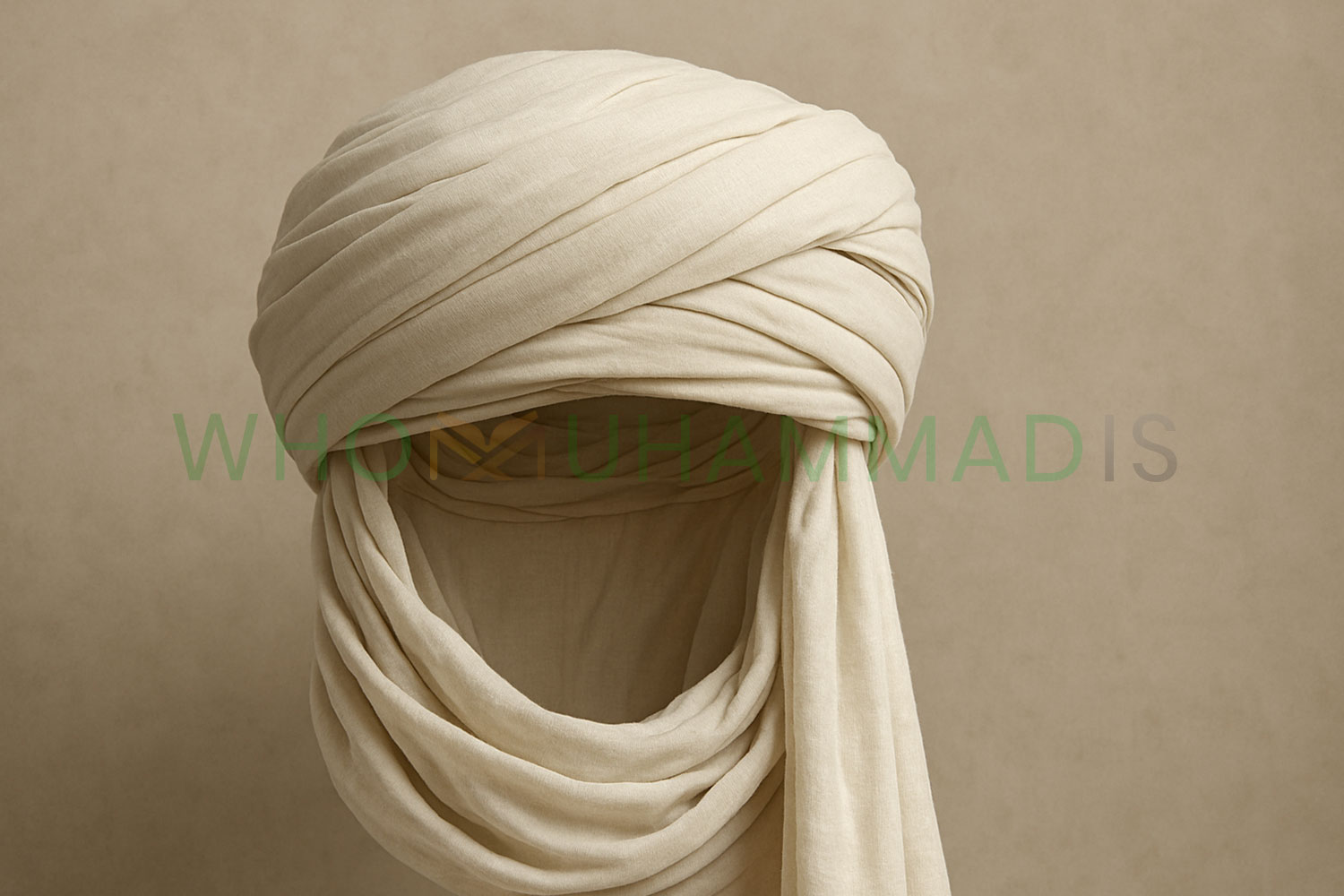
This refers to anything wrapped around the head. It was mentioned that in the later part of the Prophet's life, he wore the iṣāba. Ibn Abbas described it by saying, "The Prophet ascended the pulpit for the last time and started his address, saying, 'After praising and thanking Allah, he said, 'There is no person who has ever been given more goodness and bounties than me by Allah, nor, has anyone been given a better family than mine by Allah. Verily, we (i.e., Muhammad and his family) are, from among the slaves of Allah, of the helpers of truth (i.e., the prophets). So, I praise Allah because of his pride in me and my family. O people! Choose the one who is most truthful (i.e., Muhammad) and accept his commands. O people! Allah sent his prophet Muhammad with the truth and gave him the book (Quran). Among the things which were revealed to him was the verse of Al-Hijab (i.e., the veiling of women).
Al-Amama

This is a well-known head covering among the Arabs, also referred to as "Tiǧān al-‘Arab" (the crowns of the Arabs). It was mentioned in many traditions. The Prophet used to wear it in his distinctive manner, wrapping it and leaving a part of it loose between his shoulders. There are various ways the turban could be worn, but they are not restricted to one method. It could be made from different fabrics, sometimes even from the same fabric as the garment. The Prophet wore turbans of different types, including black ones like the Harqaniyyah, the Huṭukiyyah, and the Qiṭriyyah. It was described that the Prophet entered Makkah on the day of the conquest wearing a black turban.
Izar
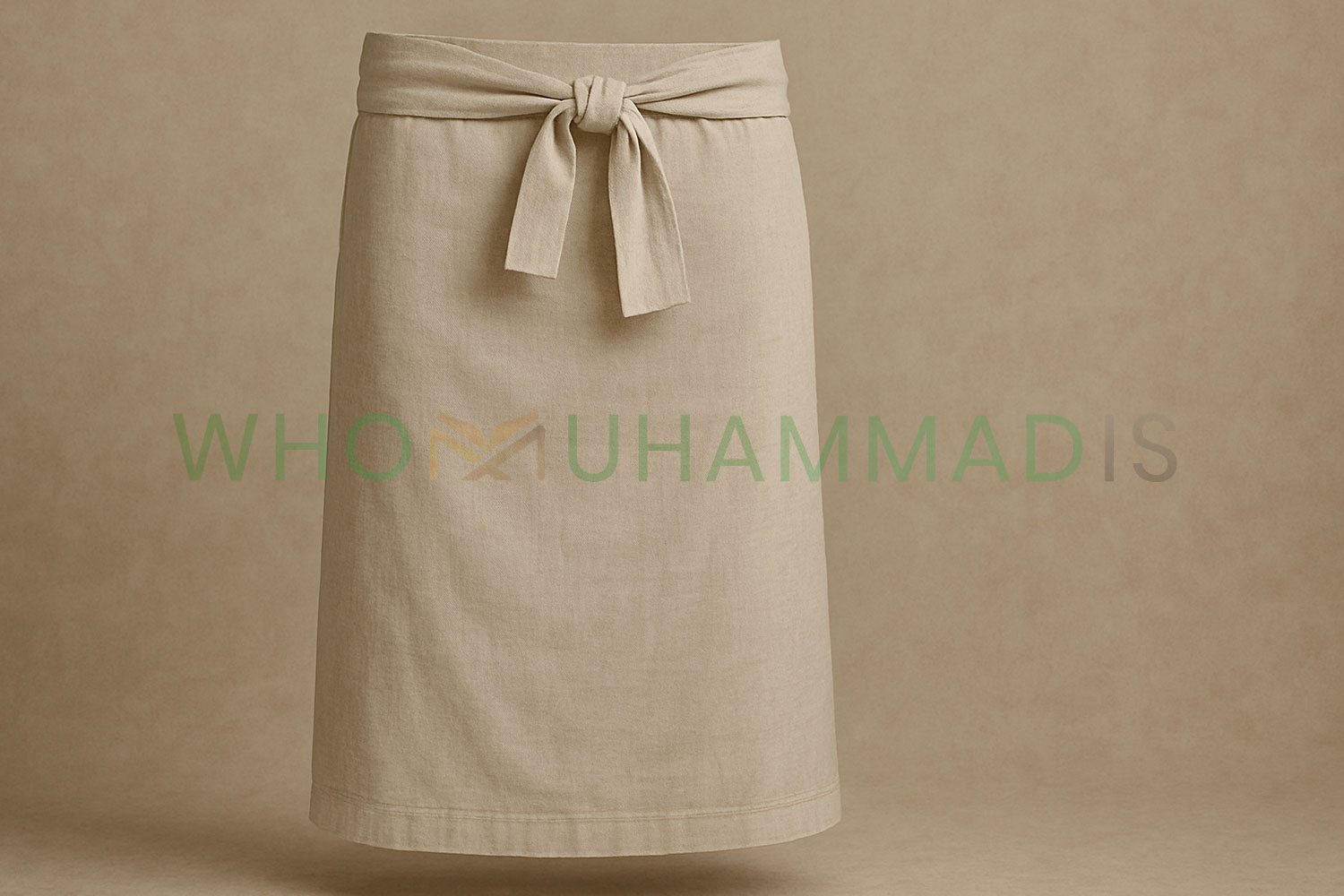
This term refers to anything that covers a person and is specifically used to describe a garment that covers the lower part of the body, concealing the private parts. It is not made of any specific fabric. The izar is mentioned in many hadiths, such as the Prophet's statement, peace be upon him: "What is below the ankles of the izar is in the Fire". Companions mentioned that the Prophet would come out to them wearing an izar, and during the retreats for spiritual reflection, he would tie his waistcloth. In early Islamic times, the term izar referred to a garment in general, and later, it specifically referred to a large and comprehensive covering.
Burdah
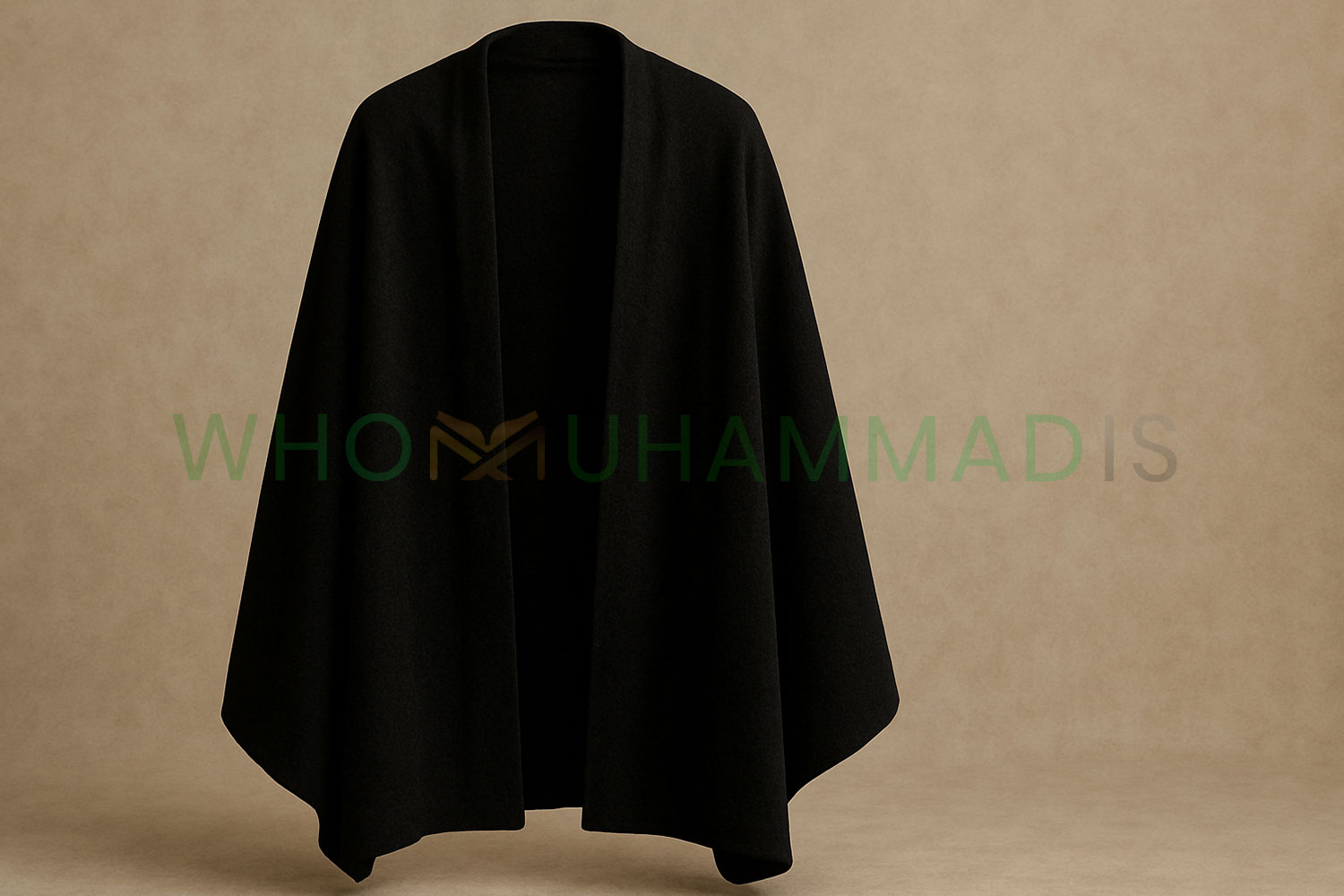
This garment is something that a person wraps around themselves. Aisha, may God be pleased with her, made a black burdah for the Prophet, and he wore it. A burdah was also gifted to him by a woman, which he accepted. He owned two green burdas known as Habrah, which refers to burdas that have some red in them. The Burdah was also used in the pre-Islamic era as a cloak by day and as a cover at night. One of the Prophet’s most famous burdas was gifted to Ka'b bin Zuhair as a reward for a poem he composed to praise the Prophet. This burdah was later bought by Muawiyah and remained with the Abbasid caliphs until the Mongols invaded Baghdad, and Hulagu ordered it to be burned; however, it is said that it was not burned and was worn in processions.
Jubba

This is a detailed garment, similar to a modern frock coat with long sleeves, typically open at the front and worn over a kaftan. It is lined with fur in winter. In Mecca, it was worn over the body, made from light fabrics and silk, and was a complete garment that did not require wearing anything else with it. It is reported that the Prophet Muhammad prayed with their companions, wearing only his jubba. He disliked jubbas made of silk and those with silk edges. One type of jubba has silk buttons. A man came to the Prophet wearing a Jubba of this type, and the Prophet criticized his choice, indicating that such clothing was frivolous. The Prophet wore a jubba during travel, which had narrow sleeves.
Habrah
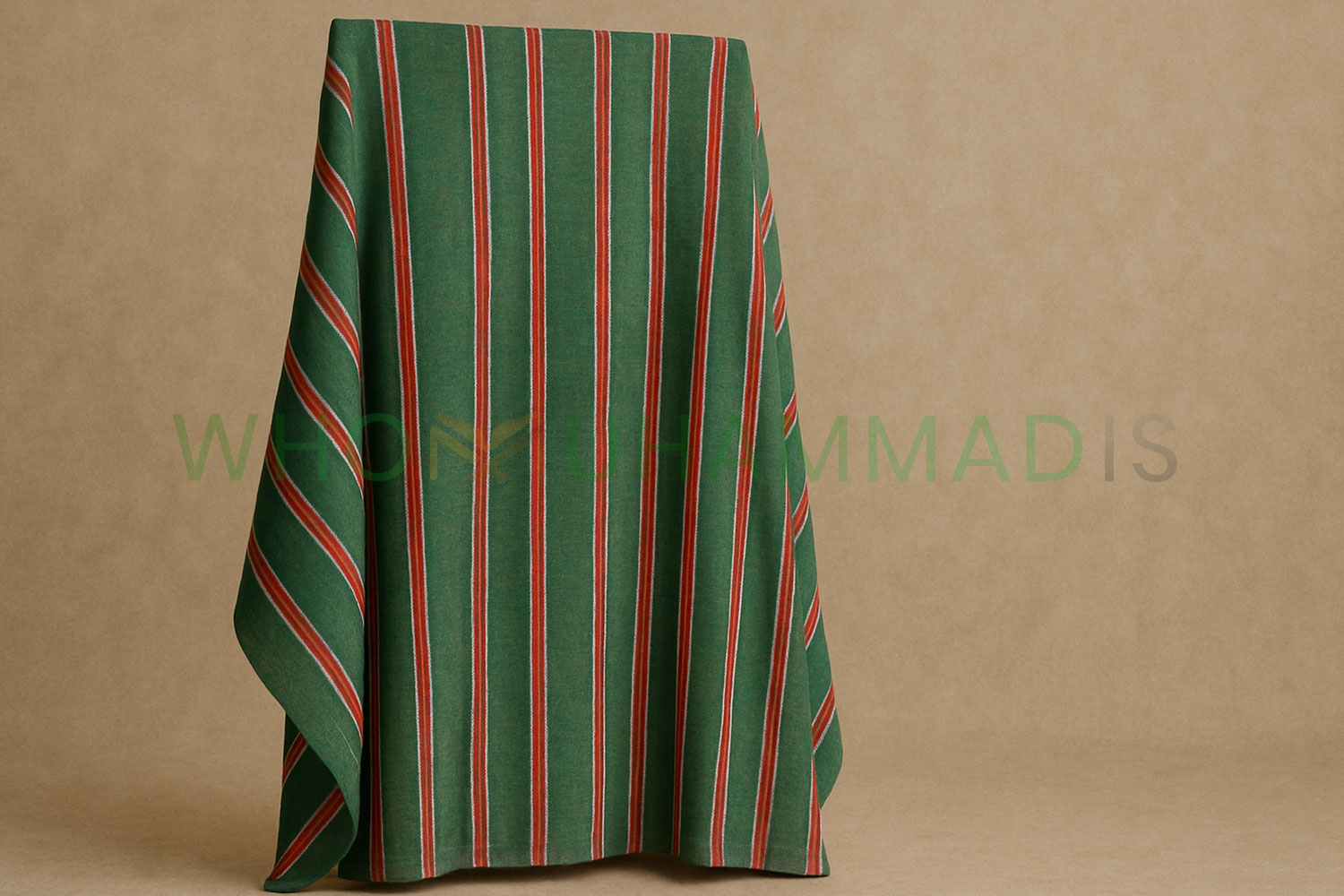
This is a type of Yemeni garment, typically striped, and was the Prophet's preferred type of clothing. It is not a specific piece of clothing but rather an ornamentation added to clothing. The Prophet was shrouded in a garment and a Habrah at his death, and the Habrah was named for its decorations and was among the most noble garments of the Arabs. It was usually green and made of woven cotton, not tailored to fit the body.
Hullah

This is a combination of an izar and a cloak, referred to together as a single garment. The Prophet wore a red hullah. Aisha made one for him, which he stopped wearing after noticing it retained the smell of sweat due to the wool. Some companions saw him wearing a Yemeni hullah, and Umar bin al-Khattab saw a sira hullah being sold near the mosque and suggested that the Prophet buy it to wear for receiving delegations. The Prophet refused, saying it was clothing for those without moral fiber in the afterlife. He negotiated with the people of Najran for two thousand Hullahs and gifted some to kings, like the Negus of Abyssinia.
Khamisa

This is a black square-shaped garment with flags, and if it does not have flags, it is not called a khamisa. Aisha reported that the Prophet prayed in a Khamisa with flags, which distracted him, so he asked for it to be exchanged for a plain garment. Some companions saw him praying for rain, wearing a black khamisa, and Anas reported that when his mother sent him to the Prophet to check on her son, the Prophet was wearing a khamisa from Hurayth.
Rida
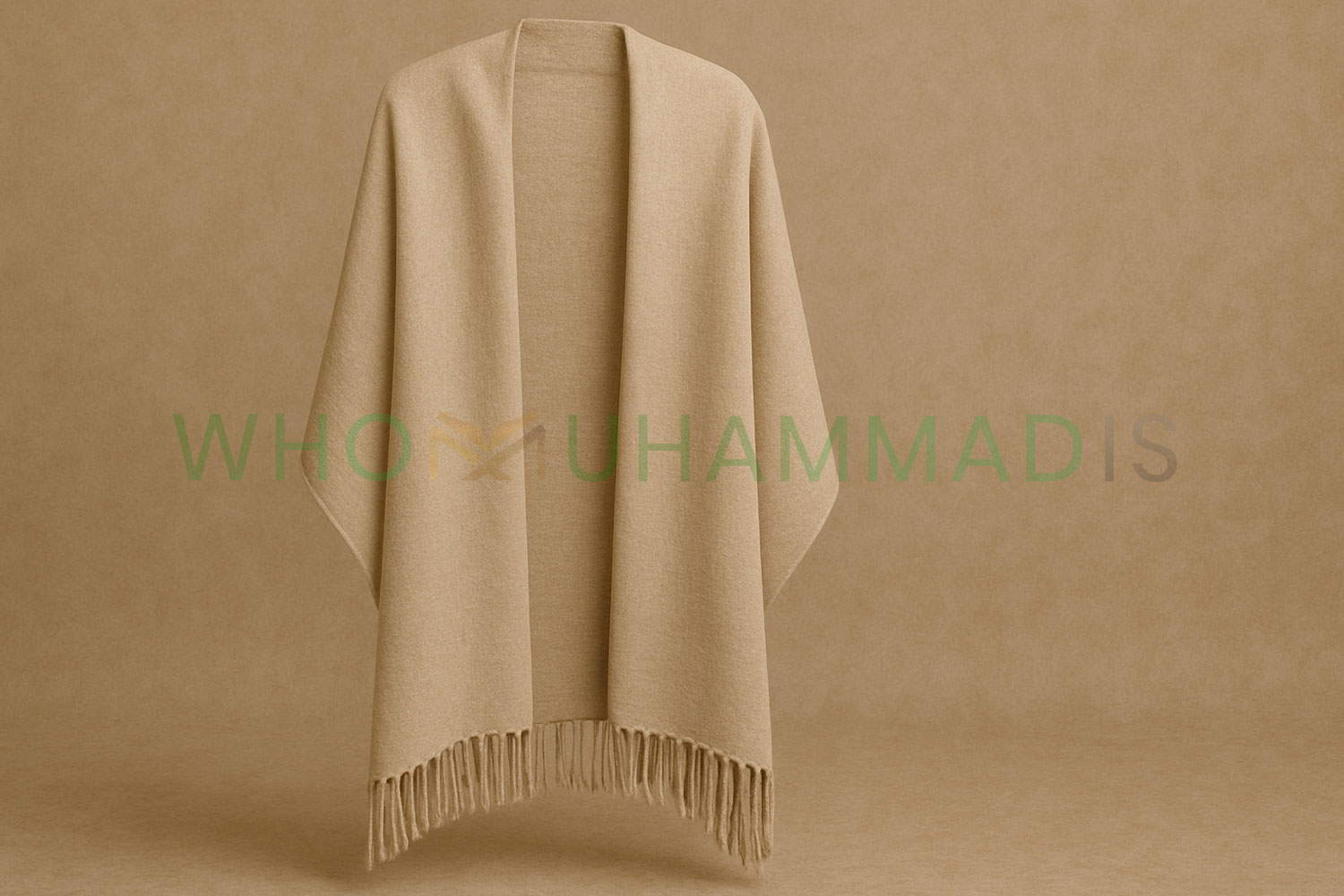
This is a garment worn over other clothes, like a cloak, and covers the upper part of the body. Aisha reported seeing the Prophet covering her with his Rida. He also wore a Najrani Rida, a Hadrami Rida, and a Kurdish Rida, especially during prayers for rain and when entering the state of ihram for pilgrimage. The length of his Rida was six cubits and three fingers, and his Omani izar was four cubits and a span wide.
Sarawil

This garment covers the lower part of the body and is forbidden for those in the state of Ihram. It is reported that the Prophet bought sarawils and that he and his companions wore them with his permission.
Shamla

The Arabs used to wrap themselves in this garment at night when sleeping. If a shamla is striped, it is called a Nimra. The Prophet wore a shamla before Islam when he participated in the rebuilding of the Kaaba. It is considered modest attire worn by the poor.
Qaba

This is a Persian term for an open-fronted robe tied with a belt worn over other clothes. It is referred to as a frock coat in modern terms. The Prophet divided some Qabas among his companions, but initially did not give any to Makhrama, later revealing that he had reserved one especially for him.
Qamis
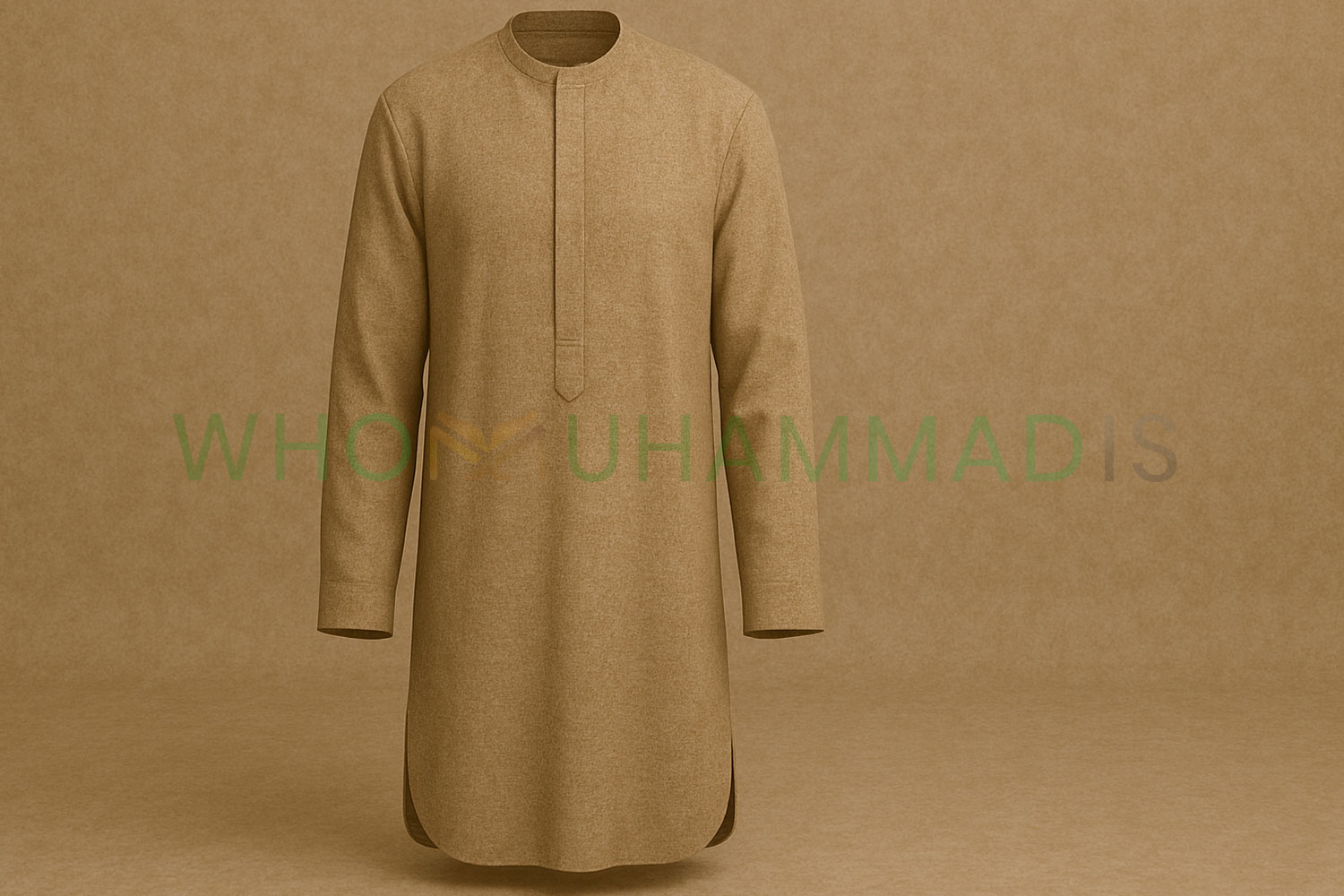
This is a stitched garment with sleeves worn under other clothes and typically made of cotton, linen, or wool. It was one of the Prophet’s favorite garments. He was seen praying a funeral prayer wearing two qamis, and during the Battle of Badr, his uncle Abbas gifted him a qamis from Abdullah bin Ubay. The sleeves of the Prophet’s qamis extended to his wrists.
Mula'ah or Milhafah

Mula'ah refers to a Milhafah if it is padded or lined. It is worn over other garments. Qulaylah bint Makhrama saw the Prophet wearing two Za'faran Mula'ahs, and Ibn Abbas reported seeing the Prophet ascending the pulpit wearing a Milhafah over his shoulders.
Kisaa

This term refers to any covering made from fabric, not exclusively for human use. It can cover anything from the Kaaba to a horse or a camel, as well as beds and seats. Anas bin Malik saw the Prophet using a Kisaa for praying and as protection from the heat and cold of the ground. Among the types of Kisaa is the abaya, made of wool, open at the front, and worn over other clothes. A hadith by Yazid bin Sharik recounts that the Prophet let him wear an abaya he had been praying in, and he slept in it until morning.
Sandals

Certain guardians indicated that Prophet Muhammad's sandals were yellow. Various accounts state they were crafted from cowhide, ankle-high, and featured a raised heel for support, a smooth tongue-like structure, and straps for toe grip.
Colors of the Prophet's Clothing, Peace Be Upon Him
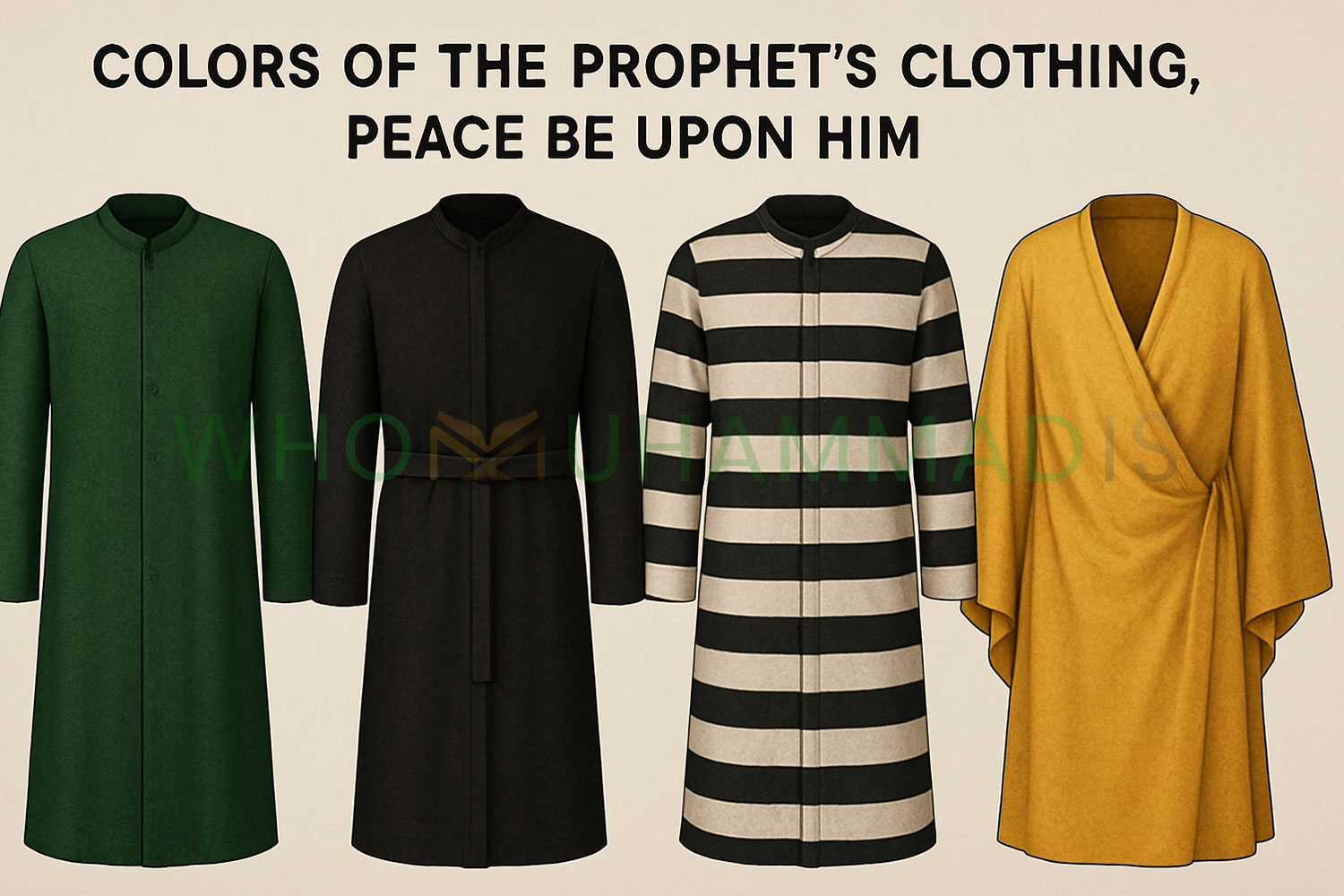
The Prophet, peace be upon him, wore garments that were green, black, striped with black and white, and yellow, provided they were not dyed with safflower or saffron, and white, which was his favorite color. He encouraged his noble companions to wear white by saying: "You should wear white garments; dress your living ones in them, and shroud your dead with them, for they are your best clothes".
Thus, wearing white is part of the Sunnah, and wearing other colors is permissible. There was a disagreement regarding the color red; some disliked it while others permitted it, based on the hadith: "The Prophet, peace be upon him, came out wearing a red Hullah". He forbade wearing clothes dyed with safflower or saffron.
The Importance of Clothing in Islam
In language, clothing is defined as anything that covers the human body, be it garments or otherwise. It is said, "I wear the garment, and I clothe others," and the item worn is called "libas" (clothing). The importance of clothing is evident as it signifies civilization, urbanity, and respect for others. It is also one of God's blessings bestowed upon humans, protecting them from the temptations and whispers of Satan that call for the removal of clothing.
God Almighty says, "O Children of Adam, We have bestowed upon you clothing to cover your private parts and as an adornment. But the clothing of righteousness is best. That is from the signs of Allah that perhaps they will remember. O Children of Adam, let not Satan tempt you as he removed your parents from Paradise, stripping them of their clothing to show them their private parts. Indeed, he sees you, he and his tribe, from where you do not see them. We have made the devils allies to those who do not believe" (Quran 7:26-27). Thus, the discourse is general for all humanity, as God has graced them with what covers their bodies, including feathers, garments, and more.